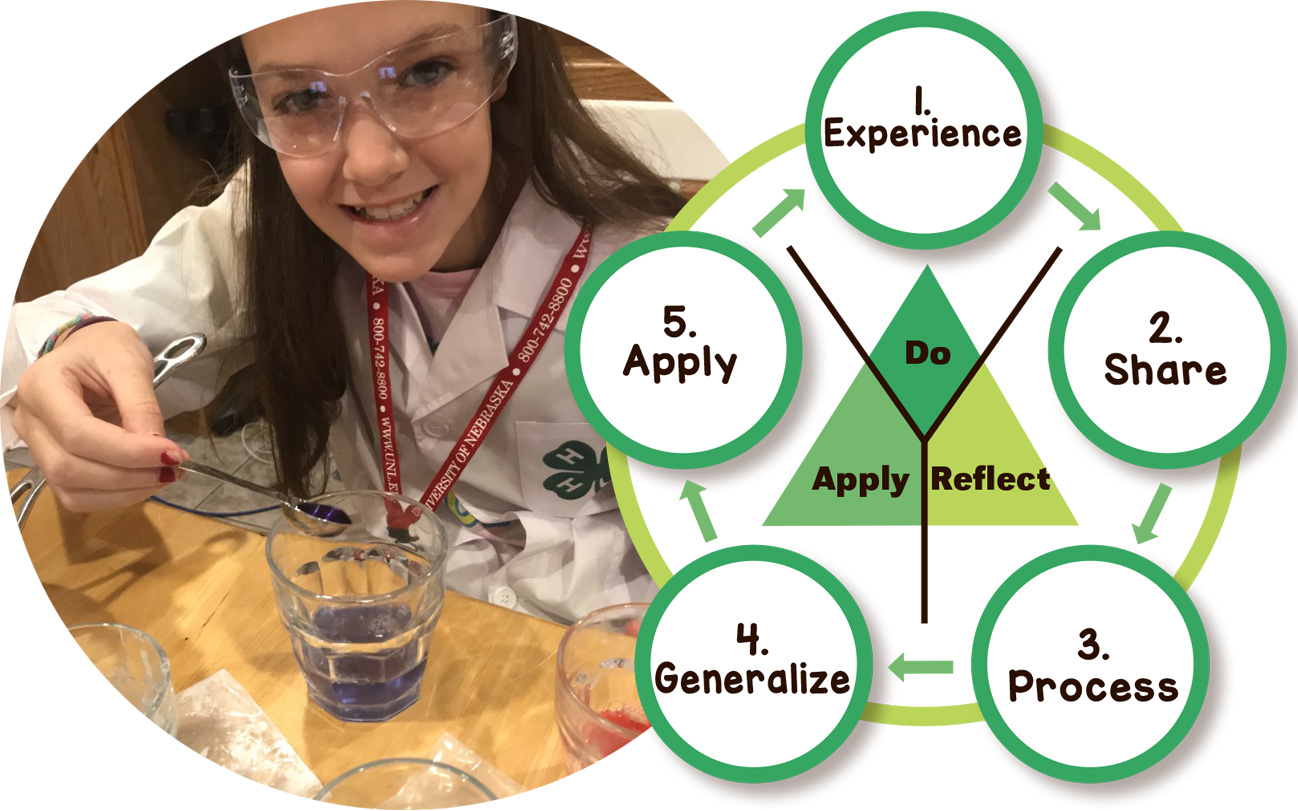
By Tracy Anderson, Extension Educator in Lancaster County
One of the best ways instructors can engage young people in learning is to give them opportunities to “Learn by Doing.” This includes exploring and discovering, as opposed to just reading or listening to lectures. Instructors providing “Learning by Doing” are varied and could entail parents, teachers, volunteers and teens. As varied as the instructors are, so are the places “Learning by Doing” can happen, which could include at a beach, kitchen table, classroom, barn or 4-H meeting.
The phrase “Learning by Doing” is at the forefront of the 4-H youth development program and is a well-thought-through process grounded in the “Experiential Learning Model” developed by David Kolb (1984) and modified by 4-H. Divided into five steps, the experiential learning model helps teach skills, knowledge and life skills. Each step helps youth recognize what they have learned from an experience or activity and apply the skill, knowledge or life skill to other experiences or situations.
TIPS
All steps are important in Experiential Learning. Oftentimes in education and learning, the learner spends most of their time on the experience. Spend as much time on the “Share,” “Process,” “Generalize” and “Apply” as the “Experience.” Experiential Learning is a continuous flow. For example, sometimes youth may want to return to the “Experience” to make changes due to the information they learned from their experiences or from others.
Some tips to help instructors guide young people through the five “Experiential Learning Model” steps.
• Ensure enough time is available to reflect on the experience.
• Listen and ask the right questions.
• Plan developmentally appropriate experiences that lead to reflection.
• Support each youth’s way of learning.
Source: Kolb, D.A. (1984). “Experiential Learning: Experience as the Source of Learning and Development,” Englewood Cliffs, NJ: Prentice Hall.
****************************************
FIVE EXPERIENTIAL LEARNING MODEL STEPS
DO
1. Experience the activity; perform, or do it. Youth engage in a hands-on educational learning experience.
REFLECT
2. Share the results, reactions and observations publicly. Example questions to ask youth:
• What did you do?
• Where did you go?
• What was easiest?
• What was most difficult?
• What did you learn while doing this project?
3. Process by discussing, looking at the experience; analyze, reflect and identify common themes. Example questions to ask youth:
• What did you learn from this project that you didn’t know before?
• How did you make your decision? What steps did you take?
• What life skill(s) were you developing through your project?
• What did you learn from sharing with others?
APPLY
4. Generalize to connect the experience to real-world examples. Example questions to ask youth:
• What key points have you learned?
• How is this life skill important to you?
• Where might this situation occur in the future?
• Why is it important to have plenty of information before making decisions?
5. Apply what was learned to a similar or different situation; practice. Example questions to ask youth:
• What did the project mean to your everyday life?
• How can you use these skills or knowledge in different situations?
• In what ways do people help each other learn new things?
• What other situations like this have you experienced before?
Source: Deidrick, J., 2005 MN 4-H Curriculum Committee.